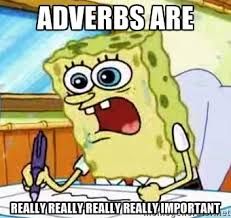Alright kids, this is where the rubber meets the road. All other articles on this site discussed different parts of grammar, their purposes and correct usage, and how to identify them. All of this, of course, leads up to the creation of the almighty sentence, one of the abilities that sets humans apart from the rest of the animal kingdom. So, now that you’re thoroughly inspired, let’s dig in to how all previous grammar studies go in to the formation of a sentence.
Until now, the word sentence and clause has been used interchangeably. However, in this chapter I will distinguish between sentence and clause, so that you may be able to understand which is being discussed.
Sentence: a component of grammar that consists of one or more clauses
The thing to notice here is that a sentence may be only made of one clause. That is the case of almost every example provided in each article, which is why clause and sentence can both be used to describe the same thing. When a sentence only has one clause it is referred to as a simple sentence.
Simple Sentence: a sentence consisting of only one clause
So, sentences such as “The dog stole the Thanksgiving turkey!” is a simple sentence because it only has one clause; the sentence cannot be broken down any farther. However, this article is about building larger sentences.
COORDINATION
Many sentences are not simple sentences. Oftentimes, we must use multiple clauses to explain a thought or convey information. These sentences are called compound sentences.
Compound Sentence: a sentence containing two or more clauses
However, one cannot simply mash two clauses together and expect them to make sense. I cannot say “speak now forever hold your peace” unless I want people to think I’m writing abstract poetry.
Instead, we must use our handy coordinating conjunctions. These, if you remember, can either be simple, such as and, for, so, nor, yet, but, and or, or correlative, such as not only/but, both/and, either/or, and neither/nor. These words coordinate the relationship between both clauses and let the reader/listener know how the clauses interact with each other.
The coordinating conjunction and can be used in several ways. It can be used to link facts together, such as:
Cats are snobs and dogs are goofballs.
It can be used to show an order of event relationship:
She ate at Taco Bell and she had an ice cream sundae for dessert.
It may suggest a cause-and-effect relationship:
Eat the last cookie again and you’ll be sleeping with the fish tomorrow!
The conjunction so makes the first clause be a reason for the second:
She was stuffed from Thanksgiving dinner, so she went to bed at 7 PM.
But and yet signify that the second clause doesn’t meet the expectations of the first clause:
Ashley was excited about the date, but he never showed up.
The mechanics swore the car was fine, yet the car broke down.
Or denotes that the clauses are alternatives:
We could go to the movies or we could Netflix and chill.
For shows that the second clause is the reason for the first; the opposite of so:
Cassandra received an A in her class, for she was a hard-working student.
Nor indicates that the second clause is a continuing negative of the first:
That waitress was neither polite nor efficient.
Another thing to always keep in mind that a compound sentence can be more than just two clauses, and multiple conjunctions may be used to indicate relationships between each clause.
Ashley was excited about the date, but he never showed up, so she went home and she ate a tub of ice cream.
One grammar rule to keep in mind: if a clause has a sentence adverb, it cannot be part of a sentence with the first clause. Here is an example:
My room is a mess, but I refuse to clean it.
My room is a mess. However, I refuse to clean it.
The tricky part is that two sentences like that can be joined by a semicolon, which will trick some students into believing the two sentences are one.
My room is a mess; however, I refuse to clean it.
A simple way to remember whether you are looking at one or two sentences is that coordinating conjunctions link two clauses together but are not really part of either one, while sentence adverbs are usually part of the second sentence.
ELLIPSIS
Without coordination between clauses, communication would be difficult. However, combining clauses can create some redundancy as well. For example:
I cooked the fajitas and I ate the fajitas.
Most would simply say, “I cooked and ate the fajitas.” This elimination of redundant material is called ellipsis.
Ellipsis: omitting repeated material
Ellipsis is very common in conversation and in writing, as the relationship between clauses and the information in those clauses often overlaps. Thank goodness for ellipsis, right?









